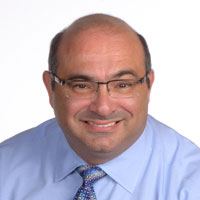Current demographic data clearly show that the North American population is aging, and projections suggest that the percentage of older people will increase. The elderly often suffer from multiple chronic conditions that affect their quality of life, use of health services, morbidity and mortality. Also, in those of advanced age, the pharmacokinetics and pharmacodynamics of many drugs are altered. Thus, the dental practitioner must be continually aware of the pharmacologic status of each patient and consider the likelihood of interactions between drugs prescribed by the dentist, drugs prescribed by the physician and drugs that are self-administered, including over-the-counter medications and natural supplements. In this lecture, we will discuss pharmacokinetic and pharmacodynamic changes in the elderly patient, polypharmacy, various comorbidities and the changes in prescribing for our dental patients. Also, we will review preventive strategies in this population.
Learning Objectives:
1. Understand the shift in demographics and challenges to dental practice.
2. Understand the effects the implications of aging on pharmacokinetics and pharmacodynamics.
3. Define poly-pharmacy and recognize it in daily practice.
4. Recognize common comorbidities in the elderly and common adverse drug reactions and Drug Interactions.
5. Discuss the Preventive strategies in the geriatric population.

